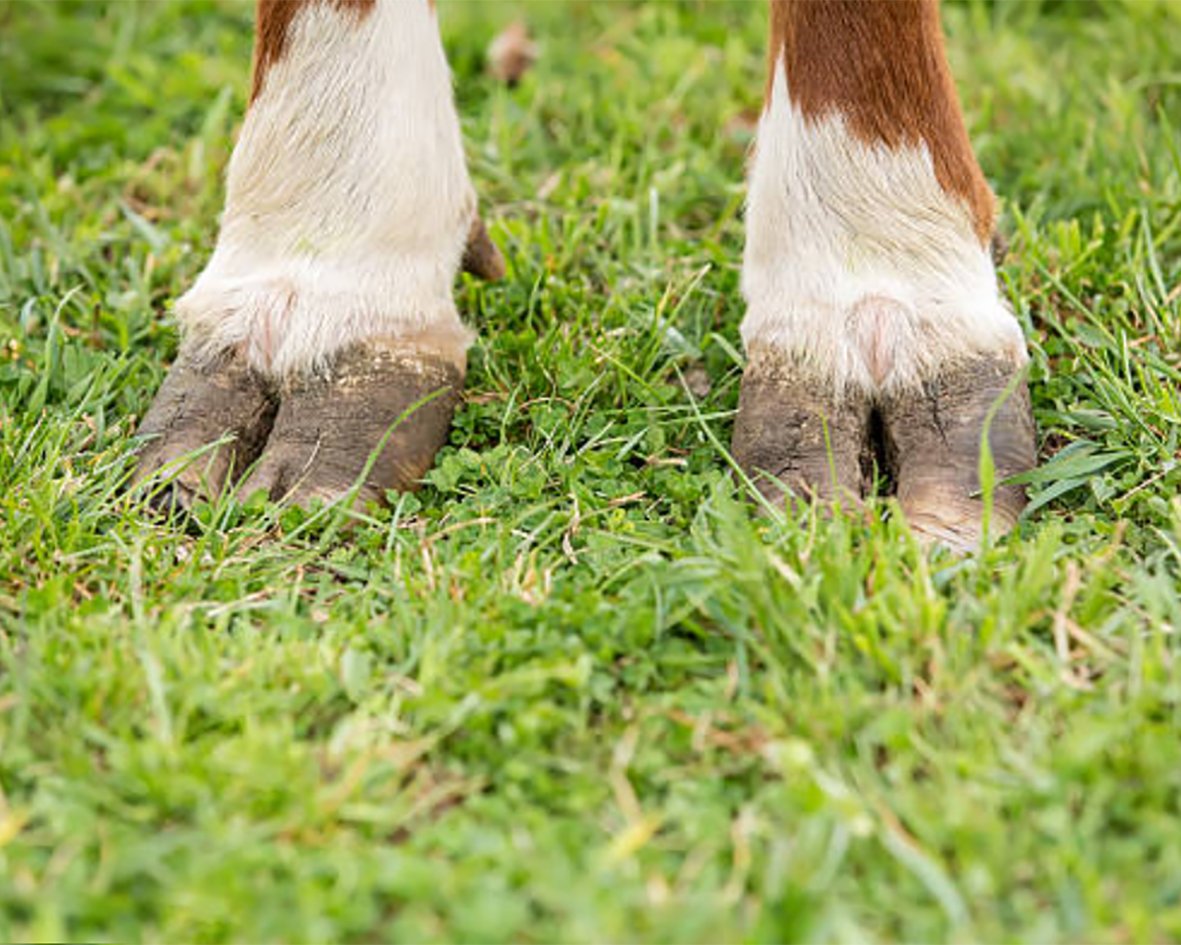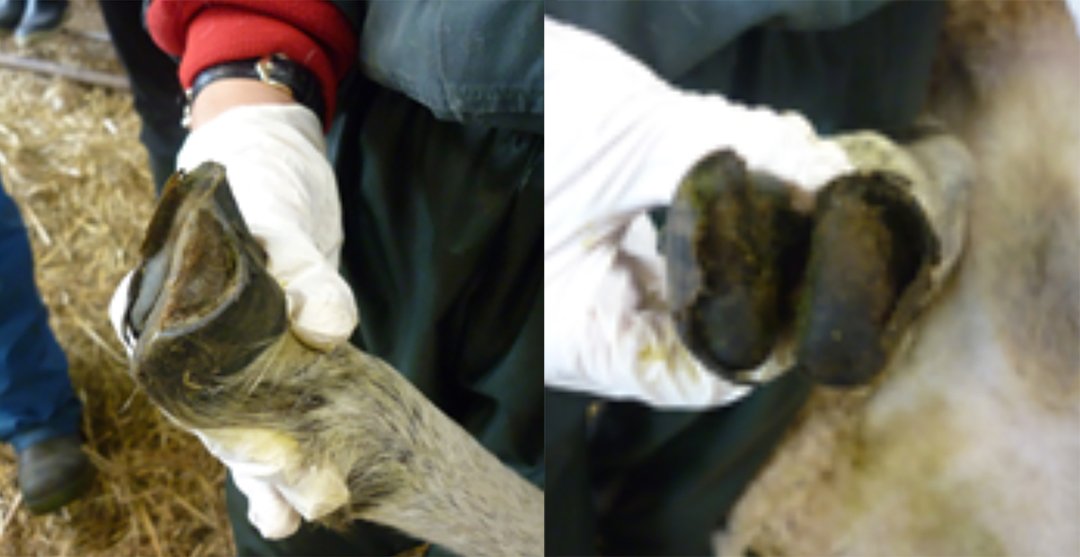HOOF CARE for small ruminants and pigs.
Checking the hooves of your sheep, goats, alpacas and pigs should be performed at least twice a year. It is a good step to add at the same time as other animal health protocols such as shearing and drenching.
What’s normal?
A normal, healthy hoof should have a hard horn (wall) around two toes, each with a softer horn (sole) at the base. The wall bears the animal’s weight, so a healthy hoof has a wall that is usually a little proud of the sole to allow this to occur. The skin between the toes (interdigital skin) should be pale pink and dry, usually with a fine layer of hair.
Common abnormalities
Things you should look for, that indicate there is an issue, include:
Swelling
Redness
Heat
Foreign body (e.g. a stone)
Injury or wound
Smell (once you’ve smelt foot rot, you will know what I mean!)
Presence of pus
Take a photo; these can often be helpful with diagnosing a condition of the hoof, as well as assessing response to treatment.
There are several conditions of the hoof that can occur. Factors that may predispose an individual to developing one of these issues can include: environmental changes (especially wet weather), species and even breed variation.
Some of the more common conditions we see include:
White line disease (shelly hoof):
This is when the horn of the wall and sole separate, forming a pocket on the other edge of the hoof. This pocket exposes animals to secondary disease as dirt and mud etc. becomes impacted, creating discomfort and providing an ideal environment for infection to occur. The reason for shelly hoof occurring has not been clearly identified, but wet terrain and nutritional imbalances are thought to be predisposing factors. Treatment is achieved by therapeutic trimming; removing the flap of hoof wall in an inverted ‘U’ or ‘V’ shape (as pictured).
Foot rot:
This is an infection of the hoof caused by the bacterium Dichelobacter nodosus. These bacteria are normally found in the environment and on animals’ hooves; it is an overgrowth of the bacteria (usually caused by a wet environment) that leads to infection and resulting foot rot. Infections are most likely to arise in warm and moist environments (especially spring and autumn). Antibiotics are generally required to treat, an injectable, topical (spray) or a combination of the two may be recommended, depending on the infection's severity. If you suspect you have an animal suffering with foot rot then please contact your veterinarian to be able to have this diagnosis confirmed and a treatment plan put into place.
Scald:
The same bacteria that causes foot rot can also be responsible for a more superficial infection of the hoof (interdigital dermatitis, referred to as scald). Predisposing factors for this infection include a high stocking rate, chronic exposure to a wet/damp environment (which softens the hoof and surrounding skin), and a trauma to the hoof (for example a scratch by a thorn or branch). If left untreated, or if there have been many animals affected on the property, then foot rot can be a complication of this condition.
Toe abscess:
This is the result of damage to the hoof (generally a puncture to the sole) which allows bacteria to enter and an abscess to form within the hoof itself. As you may expect, this is incredibly painful, and often the animal will be bearing minimal weight on the affected leg. The hoof itself will often be hot to touch, and as the disease progresses pus will be released through the skin of the coronary region (just above the hoof). If you suspect your animal has a toe abscess, then please call to arrange an appointment with your vet. Draining the abscess and pain relief is required for treatment, and often antibiotics are indicated.
Toe granuloma (strawberry):
As the name suggests, this condition can look as though there is a strawberry stuck to the sole surface. It is the result of damage to the sensitive tissue of the hoof, which may be from a previous infection (such as foot rot), injury to the hoof or inadvertently by over-trimming. The exposed tissue is often red, sensitive and bleeds easily when touched, and the animal will likely be very lame (often bearing minimal weight). If you identify a toe granuloma, please seek veterinary advice as treatment can be complex and antibiotics often need to be prescribed.
When to seek help
If your animal is experiencing lameness, then we suggest taking a close look at the leg (if it is safe to do so) to see if you can identify any abnormalities. Remember to take some photos as these can often be helpful with diagnosis and assessing response to treatment.
If you are unsure about what the issue is, or if you suspect that prescription medications are required for treatment (e.g. for a toe granuloma or hoof abscess) then please phone the clinic to arrange a consultation with one of our large animal vets.
If you are having ongoing lameness issues with your herd then we also recommend a consultation with one of our large animal vets to discuss what the predisposing factors may be, and to help you establish a treatment and preventative management plan.
Prevention is key
There are some management practices that can be easily implemented to reduce the occurrence of these hoof diseases. The main things to consider is; don’t overstock your paddocks and ensure animals have access to a dry area. Of course, weather and other environmental factors are often out of our control, however rotational grazing of paddocks so that animals can be in the driest paddocks during a wet weather event is often achievable. Other things to consider include:
Providing adequate shelter for all animals to prevent overcrowding
Provide adequate water trough access to prevent overcrowding
Minimise the number of times animals are yarded
Images have been sourced from: https://ahdb.org.uk/knowledge-library






